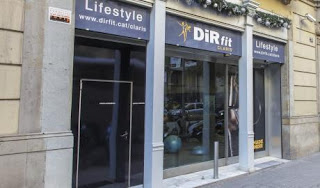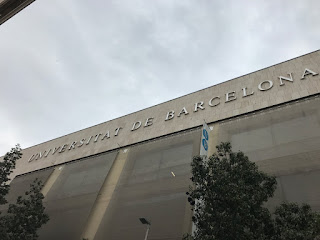The following article was translated from El Periódico:
"Detinguts in fraganti dos grafiters per pintar dos vagons del metro de Barcelona
On the 21st of April, police officers caught two graffiti vandals defacing a wagon of the Barcelona metro, according to the Catalan police on Sunday. The police arrested two German nationals, aged 31 and 33, as the perpetrators of the vandalism and consequent disobedience to law enforcement officers. The incident occurred when two plain-clothed patrol officers saw three alleged vandals enter the subway through an emergency exit in the district of St. Martin Street.When the police identified themselves the young men ran away and tried to get rid of their supplies in their backpack. The police managed to arrest two of the three young people, who all continuously resisted arrest and identification as well as causing minor injuries to the arresting officers.
The police officers later recovered the arrested suspects' backpacks and could see that they were full of spray paint and other graffiti equipment. In addition to the equipment, the police found a memory drive with a video of the vandals performing the illegal act, further proving how dumb some criminals really are.
The vandals incurred damages totaling 1,600 euros and were charged with vandalism, resistance and disobedience to authority. The suspects will go to court Friday as the judge ordered the guard of liberty charges."
I enjoyed reading this small article that demonstrated the fact that small petty crime occurs everywhere in the world. This example being how vandals were caught creating graffiti art on the Barcelona metro and how they were subsequently caught. It was nice reading about how the Barcelona police acted quickly and were able to catch foreigners who had come to their city to vandalize their public transportation.














































